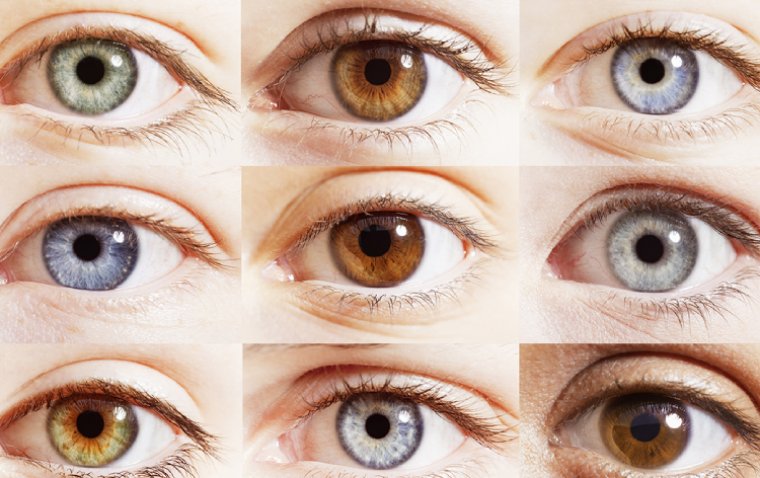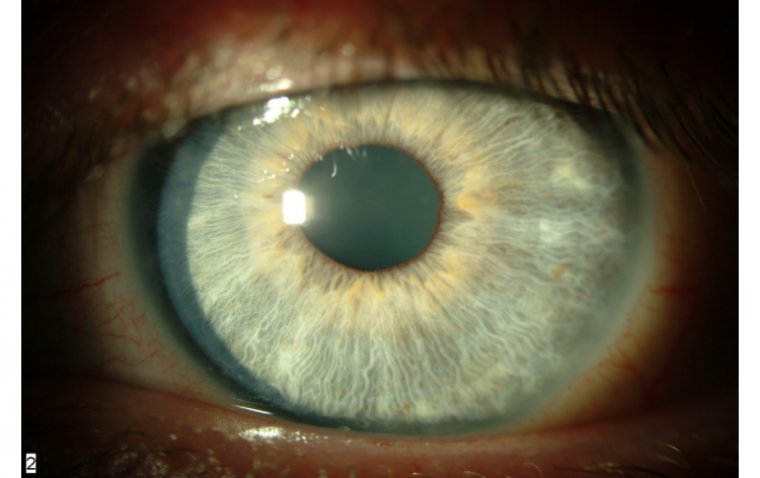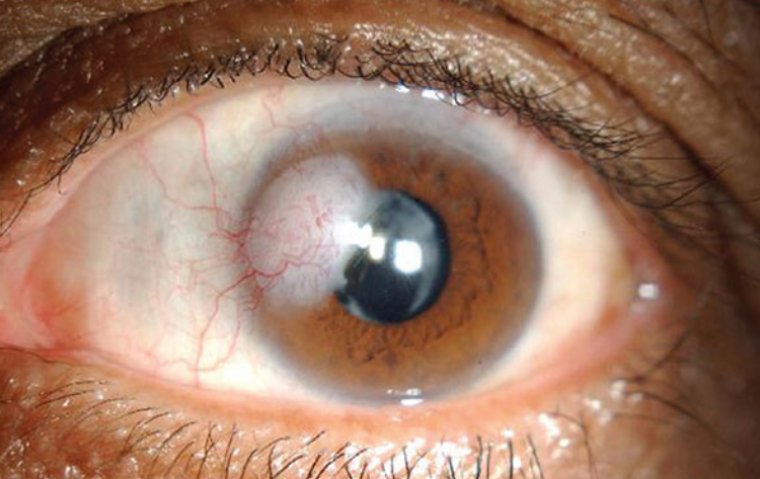
The Dark Side of Cosmetic Eye Color Change Surgery: Risks and Warnings
In recent times, a concerning trend has emerged as individuals seek cosmetic procedures to change their eye color. This viral phenomenon is fueled by risky surgical interventions, with potential dangers that experts are urging the public to consider seriously.
Investigating Three Methods for Permanent Eye Color Change
Cosmetic eye color change procedures come in various forms, including iris implant surgery and keratopigmentation, which is not approved by the FDA, and laser depigmentation. Iris implant surgery involves inserting artificial iris implants into the eyes, while keratopigmentation utilizes pigments on the cornea to alter color. Additionally, a controversial method known as laser depigmentation has also been explored, using laser technology to alter eye pigmentation, although this approach is not widely accepted within the medical community.
Let’s have a look at each one and its risks in detail.
1. Iris Implant Surgery
To conduct an iris implant surgery, a small incision is made in the eye, typically at the edge of the cornea. An artificial iris implant is carefully placed in the eye to cover the natural iris. Then, the surgeon may make adjustments to ensure the implant fits well and achieves the desired color change. Lastly, the incision is closed with sutures.
Is Iris Implant Surgery Safe?
Iris implant surgery is a controversial and risky procedure, and its safety is a matter of significant concern within the medical community. While it is marketed as a cosmetic solution for changing eye color permanently, the associated risks and potential complications raise serious doubts about its safety.
● Compromised Vision: One of the significant risks is the potential for compromised vision. Patients may experience blurred vision, glare, or even complete vision loss.
● Infection: As with any surgical procedure, there is a risk of infection, which can lead to severe complications if not promptly treated.
● Glaucoma: Iris implant surgery may increase the risk of developing glaucoma, a condition characterized by increased pressure within the eye.
● Corneal Edema: Swelling of the cornea, known as corneal edema, can occur, affecting vision and requiring further intervention.
● Ptosis: Drooping of the eyelid, known as ptosis, may occur as a result of the surgery.
● Device Dislocation: The artificial iris implant may shift or dislocate over time, necessitating additional surgeries like cornea transplants.
2. Keratopigmentation
Keratopigmentation is a cosmetic procedure that involves the introduction of pigments onto the cornea to alter or enhance its color. This technique is primarily used for changing the appearance of the eyes, particularly the iris, to achieve a desired eye color.
While it is considered less invasive than certain alternatives like iris implant surgery, keratopigmentation is not without risks. Some of the potential risks associated with keratopigmentation include:
● Chronic Dry Eye: The procedure may contribute to chronic dry eye, leading to discomfort and potential visual disturbances.
● Corneal Ectasia: Keratopigmentation has been linked to corneal thinning or ectasia, where the cornea loses its normal thickness, potentially impacting visual acuity.
● Photophobia: Increased sensitivity to light, known as photophobia, can occur as a side effect of keratopigmentation.
● Infection: As with any procedure involving the eye, there is a risk of infection, which could lead to serious complications if not promptly treated.
● Unpredictable Outcomes: Achieving the desired color may be challenging, and the results may not always meet the patient's expectations, leading to dissatisfaction.
● Need for Touch-Up Procedures: Over time, the pigments may fade or disperse unevenly, necessitating additional touch-up procedures.
● Complications Requiring Transplants: A patient requiring a cornea transplant after iris implant surgery highlights the severity of potential complications.
3. Laser Depigmentation
Laser depigmentation for eye color changing surgery is a controversial and not widely accepted cosmetic procedure that aims to alter the pigmentation of the eyes using laser technology. This method involves the use of lasers to target and break down melanin, the pigment responsible for eye color, with the intention of achieving a desired change in eye color.
While laser technology has been widely used for various dermatological procedures, its application for eye color change is not well-documented, regulated, or considered safe by medical professionals.
What Are Potential Risks Regarding the Procedure?
● Vision Complications: Laser depigmentation can result in vision-related issues, including blurred vision, double vision, or even permanent vision loss. The delicate nature of the eye makes it susceptible to damage during the laser process.
● Hyperpigmentation or Hypopigmentation: Improper use of lasers may lead to unintended changes in pigmentation, causing areas of the eye to become darker (hyperpigmentation) or lighter (hypopigmentation) than desired.
● Corneal Damage: The cornea, a crucial part of the eye responsible for focusing light, may be damaged during laser depigmentation, affecting visual acuity and potentially leading to complications such as corneal scarring.
● Infection: As with any procedure involving the eye, there is a risk of infection. Infections in the eye can have severe consequences, and the use of lasers may exacerbate the risk.
● Photophobia (Light Sensitivity): Changes to the eye's pigmentation may result in increased sensitivity to light, causing discomfort and potential visual disturbances.
● Dry Eye Syndrome: Laser depigmentation can contribute to chronic dry eye syndrome, leading to dryness, irritation, and a feeling of grittiness in the eyes.
● Unpredictable Outcomes: Achieving the desired cosmetic result with laser depigmentation may be challenging and unpredictable. The laser's impact on eye pigmentation may not be uniform, leading to uneven results.
● Scarring: Laser procedures carry the risk of scarring, which, if it occurs on or around the eyes, can have implications for both aesthetics and eye function.
● Loss of Natural Eye Color Definition: Laser depigmentation may result in a loss of natural eye color definition, making it difficult to appreciate the natural beauty of the eyes.
● Psychological Impact: Altering the color of the eyes through laser depigmentation may have psychological consequences, including dissatisfaction with the results or an impact on mental well-being.
It's essential to highlight that laser depigmentation for eye color alteration is not a standard or widely accepted practice within the medical community. Considering the significant risks involved, individuals should exercise extreme caution, and reputable healthcare professionals strongly advise against pursuing such procedures.
The Alarming Incidents of Vision Loss in Eye Color Transformations
Many participants in a limited study experienced post-surgery complications, with a notable case involving the significant loss of sight for a social media personality. Recently, French company New Color, specializing in keratopigmentation, showcased a patient transforming brown eyes to vibrant blue, gaining 16 million views on TikTok. Viewers expressed surprise, questioning the necessity of such surgery over simpler alternatives like colored contacts.
One of these was Model Nadinne Bruna. Her quest for bright gray eyes led her to Colombia, where a silicone implant procedure resulted in the loss of 80% of vision in her right eye and 50% in her left.
Instead, Change Your Eye Color Temporarily – 3 Safest Options
Instead of going through risky surgeries with significant health risks, you can change your eye color temporarily using various methods, primarily through the use of cosmetic accessories. It's important to note that these methods are temporary and reversible, and they do not involve any surgical procedures or health risks associated with more invasive techniques. Here are some common ways to change your eye color temporarily:
1. Colored Contact Lenses
Colored contact lenses are a safe and popular option for altering eye color. They are available in various colors, they can be worn for cosmetic purposes. Three types of colored contact lenses are visibility lenses, opaque lenses, and enhancement lenses.
.jpg)
2. Eye Makeup
Eye makeup, such as eyeshadows and eyeliners, can create the illusion of a different eye color. Choosing colors that contrast with your natural eye color can make them appear different.
3. Color-Enhancing Clothing
Wearing clothing in colors that complement or contrast with your eyes can create the illusion of a color change.
Conclusion
The allure of changing eye color through surgery should be approached with a sober understanding of the substantial risks involved. While the idea of transforming one's eye color may seem enticing, it is crucial to recognize that medical experts strongly advise against such procedures due to the potential for life-altering complications. As this trend gains popularity, the medical community underscores the importance of prioritizing eye health and safety over cosmetic enhancements.
The delicate nature of the eyes and their essential role in daily functioning make any surgical intervention a matter of critical consideration. Vision complications, infections, and unforeseen outcomes are just a few of the serious risks associated with these procedures. It is essential for individuals to recognize that the pursuit of cosmetic alterations should not compromise the well-being of their eyes.
Rather than opting for risky surgeries, individuals are urged to explore safer alternatives that do not jeopardize eye health. Non-invasive methods such as colored contact lenses or cosmetic tinted eye drops offer cosmetic enhancements without the inherent dangers associated with surgical interventions. Preserving the integrity of one's vision should always take precedence, and the medical community stands united in cautioning against the pursuit of eye color change surgeries that lack a solid foundation in safety and efficacy.
References:
https://www.aao.org/newsroom/news-releases/detail/academy-issues-warning-on-eye-color-procedures
(1).jpg)
.JPG)










